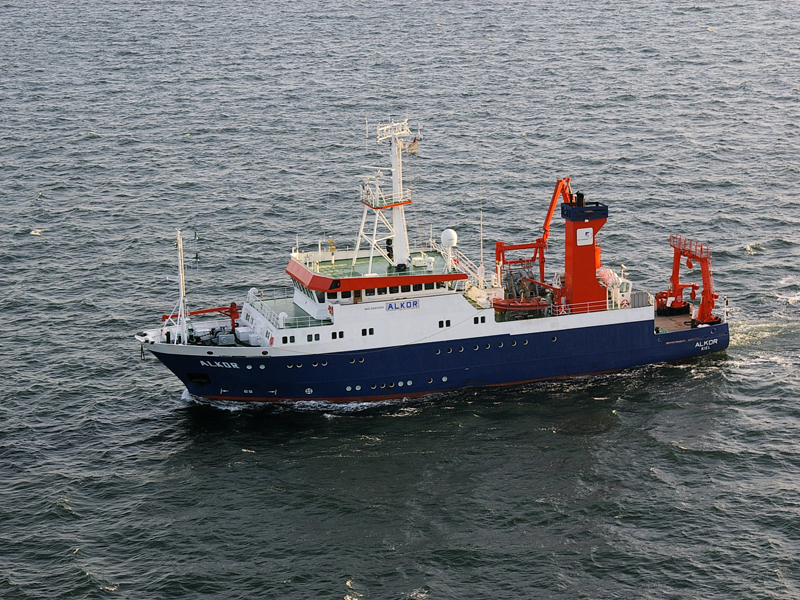ALKOR AL567
- Area:
- Baltic Sea
- Time:
-
18.10.2021 - 31.10.2021
- Institution:
- GEOMAR
- Chief scientist:
- Jens Greinert
WWII ammunition and munition has widely been deployed and dumped in the German Baltic and North Seas. Decaying munition shells are a threat to the environment, because toxic substances as TNT, ADNT, Hg and Pb are released into the water and distributed into the sediments. The aim of the two cruises is to build upon work conducted during previous cruises (POS530, L13-20, AL548), in order to develop and implement improved methods for studying and monitoring underwater munitions and their effects. The current proposed cruises support two EU projects, BASTA and ExPloTect, and will greatly advance capabilities for acoustic, magnetic, and chemical detection of underwater munitions, as well as data integration and autonomous survey methods. Ex-situ near-realtime methods for the detection and quantification of explosive compounds shall be applied and tested using a novel shipboard system developed within the project ExPloTect. These measurements will provide the first ultra-high spatial resolution data for explosive compounds in the North and Baltic Seas, forming a critical link for validating the oceanographic transport and fate model developed during the UDEMM project. Extending the high-resolution hydroacoustic and optical mapping beyond the nautically known and marked region will be performed to establish the real size of the munition contamination. For this we will use existing survey data (UDEMM and BASTA project data) and extend their regional coverage; we will further map repeatedly high-risk areas in which munition re-location might happen due to increased sediment movement (-> UDEMM Practical Guide). In parallel, towed gradiometric magnetometer surveys in conjunction with fixed installed 3D sub-bottom profiling will be employed for a better munition detection also in the sub-seafloor. Essential for the BASTA project, the integration of magnetic sensor on the AUVs and the automated magnetic-signal analyses will be continued to enable the autonomous navigation of the AUV based on the magnetic sensor readings.



